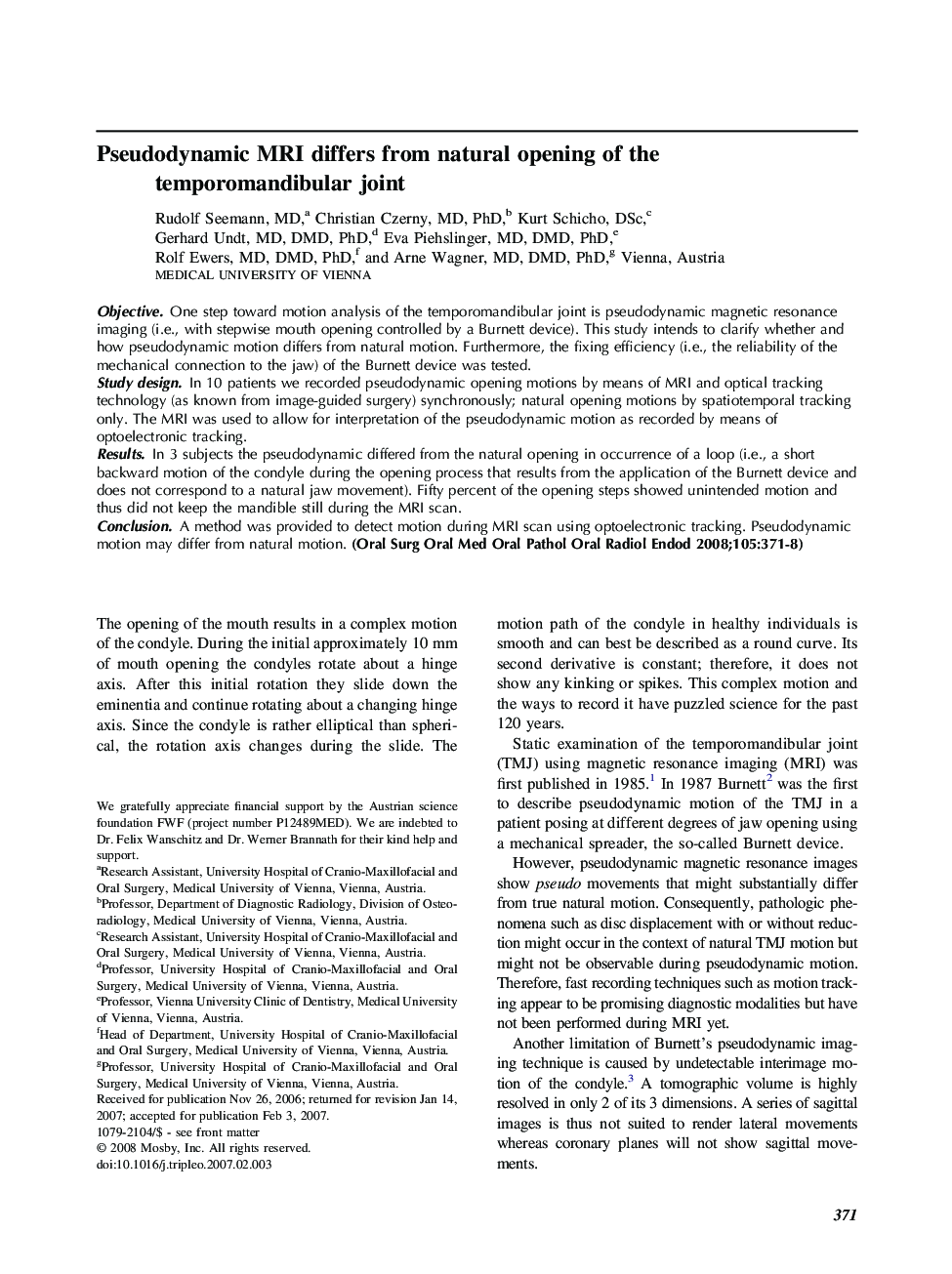| Article ID | Journal | Published Year | Pages | File Type |
|---|---|---|---|---|
| 3169043 | Oral Surgery, Oral Medicine, Oral Pathology, Oral Radiology, and Endodontology | 2008 | 8 Pages |
ObjectiveOne step toward motion analysis of the temporomandibular joint is pseudodynamic magnetic resonance imaging (i.e., with stepwise mouth opening controlled by a Burnett device). This study intends to clarify whether and how pseudodynamic motion differs from natural motion. Furthermore, the fixing efficiency (i.e., the reliability of the mechanical connection to the jaw) of the Burnett device was tested.Study designIn 10 patients we recorded pseudodynamic opening motions by means of MRI and optical tracking technology (as known from image-guided surgery) synchronously; natural opening motions by spatiotemporal tracking only. The MRI was used to allow for interpretation of the pseudodynamic motion as recorded by means of optoelectronic tracking.ResultsIn 3 subjects the pseudodynamic differed from the natural opening in occurrence of a loop (i.e., a short backward motion of the condyle during the opening process that results from the application of the Burnett device and does not correspond to a natural jaw movement). Fifty percent of the opening steps showed unintended motion and thus did not keep the mandible still during the MRI scan.ConclusionA method was provided to detect motion during MRI scan using optoelectronic tracking. Pseudodynamic motion may differ from natural motion.
